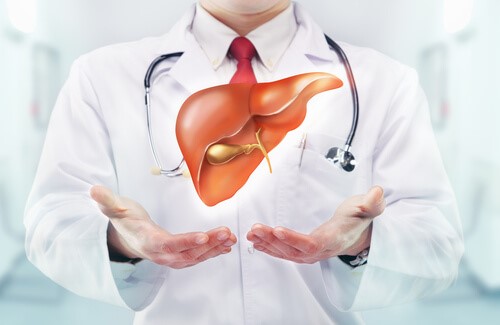Understanding Parkinson’s Disease: Causes, Symptoms, & Diagnosis

Parkinson’s disease is an age-related nervous system disorder where parts of the brain deteriorate. The nervous system is responsible for controlling many body parts, including movement.
The symptoms of Parkinson’s disease begin slowly, and early signs can be easily missed. Early detection and treatment of Parkinson’s are essential for the effective management of the condition through Parkinson’s disease treatments, as this condition is not curable.
This article explains what is Parkinson disease, what are its causes, what its symptoms are, and more.
What Is Parkinson’s Disease?
Parkinson’s disease is a nervous system condition where a part of a person’s brain deteriorates. It usually begins with a barely noticeable tremor and progresses with other symptoms that worsen over time.
It is more common in older adults. However, in sporadic cases, adults as young as 20 having a history of Parkinson’s disease in their family can also be affected. Parkinson’s disease is the most common movement-related brain disorder. It ranks second among the most common age-related degenerative brain diseases worldwide.
What Are Parkinson’s Disease Causes?
In Parkinson’s disease, the nerve cells in the brain, also called neurons, break down or die. Due to this, people with Parkinson’s disease lose two crucial hormones, namely dopamine and norepinephrine, which cause most of their symptoms.
The brains of people with Parkinson’s disease show some unique changes, such as the presence of Lewy bodies, which are clumps of protein, and the altering of energy-producing units in brain cells.
Some factors that can contribute to Parkinson’s disease include:
- Genes: Some specific gene changes are linked to Parkinson’s disease.
- Environmental Factors: Some environmental factors or toxins can elevate the risk of developing Parkinson’s disease.
What Are Parkinson’s Disease Symptoms?
The symptoms of Parkinson’s disease include:
- Tremors
Tremors in Parkinson’s disease include rhythmic shaking in hands or fingers, pill-rolling movement in hands, and trembling hand(s) under stress. The tremors can go away when performing a task.
- Slowed Movement (Bradykinesia)
Parkinson’s disease can slow one’s movement, making it troublesome to perform simple tasks like getting out of a chair or showering. It also leads to reduced facial expression (Parkinson’s disease face).
- Rigid Muscles
This disease can cause muscles to become stiff, tense, and painful, with arm movements becoming short and jerky.
- Poor Posture or Balance
People with Parkinson’s disease can stoop, have balance problems, and become prone to falling.
- Loss of Automatic Movements
People with this condition can find it difficult to perform movements like blinking or smiling that do not require deliberate thinking.
- Speech and Writing Changes
People with Parkinson’s disease can experience speech changes such as speaking softly or quickly, slurring, or hesitating before talking. The speech can also become flat or monotone.
People with this condition can also have trouble writing, with their writing appearing small or cramped.
- Nonmotor Symptoms
These symptoms of Parkinson’s disease include trouble sleeping, depression, anxiety, constipation, tiredness, and problems with thinking and memory.
Early Parkinson’s disease symptoms are usually mild and can be missed. The symptoms can also appear on just one side of the body at first and then affect both sides.
What Are the Risk Factors of Parkinson’s disease?
The risk factors of Parkinson’s syndrome include:
- Age: Older adults over 50 are at a higher risk. The average onset age is around 70.
- Sex: Men have a higher chance to develop this condition than women.
- Genetics: A family history of Parkinson’s disease increases its risk.
- Toxin Exposure: Continuous exposure to certain toxins like herbicides or pesticides can slightly elevate the risk.
How Is Parkinson’s Disease Diagnosed?
A neurologist usually begins with a physical and neurological exam to diagnose Parkinson’s disease. After examining the patient’s medical history, a physical and neurological exam is performed. The following Parkinson’s tests can further help diagnose this condition:
- Blood and Lab tests: These rule out other conditions having similar symptoms.
- Imaging Tests: These include MRI, brain ultrasound, and PET scan to help rule out other conditions having similar symptoms.
- Genetic Testing: This tests for genetic changes in case the patient has a family history of Parkinson’s disease.
- Parkinson’s Disease Treatments: The patient is given medicines for Parkinson’s disease. An improvement in symptoms can help confirm the diagnosis.
Parkinson’s disease is a degenerative brain condition that isn’t curable. Early diagnosis becomes difficult as symptoms appear slowly and can be confused with other conditions. Upon noticing the early warning signs of Parkinson’s disease given here, it’s a good idea to consult a doctor and get tested at Dr Lal PathLabs without delay.
FAQs
- What is Parkinson’s disease?
Parkinson’s disease is a movement-based brain and nervous system disorder with symptoms that become worse over time.
- What are the 40 symptoms of Parkinson’s disease related to?
Most symptoms of Parkinson’s disease are related to movement and are called motor-based symptoms. This condition is also associated with non-motor-based symptoms such as depression, anxiety, and problems with thinking and memory.
- When is World Parkinson’s Day celebrated?
World Parkinson’s Day is celebrated on April 11.













